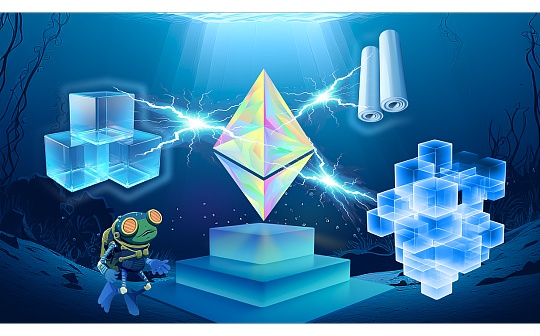Bankless: Top 5 staking tokens to watch

Reprinted from jinse
01/02/2025·3MAuthor: Jack Inabinet, Bankless; Compiler: Deng Tong, Golden Finance
Bulls buying back want to know what happens next.
Here at Bankless Airdrop Hunter, our analysts have been looking at tokenless staking protocols that are poised to be hugely successful, focusing on liquid staking token projects built around EigenLayer as well as more ambitious ones that seek to directly dethrone EigenLayer at its core. competitors.
EigenLayer’s EIGEN has not been well-received by the cryptocurrency community, and while recipients wait for their staked tokens to be unlocked, savers are actively looking for new opportunities. While Karak Network's multi-chain solution has gained some momentum since the launch of EIGEN, there has been considerable criticism of Lido's backdoor entry into the space via Symbiotic, a new re-staking protocol backed by Lido's founders Hype.
Below, let’s dive into the 5 restaking ecosystem protocols we’re looking for.
Symbiotic
Introduction:
Symbiotic is a new staking service that works with a variety of on-chain assets, not just LST, and is backed by the founders of staking heavyweight Lido. Symbiotic is positioned as a competitor to EigenLayer, aiming to leverage its close ties to Lido's inner circle and the support of key industry players. The agreement begins with $5.8 million in seed funding raised by venture capital firm Paradigm and Cyber.Fund, the investment firm of Lido's founders.
Why care:
Recently launched Lido Partner and Paradigm-backed EigenLayer competitor has a points program to gain traction in the re-hypothecation space. As with all points campaigns, these points will likely be eligible to be redeemed for tokens at some point in the future. Furthermore, the market reaction to the EigenLayer token launch provides an excellent opportunity for competitive restaking protocols to launch more attractive campaigns.
Mellow Protocol
Introduction:
Mellow Protocol provides modular and permissionless infrastructure for Liquidity Re-staking Tokens (LRT) on any staking protocol, allowing users to choose risk levels through curated vaults. Mellow's vision aligns with Symbiotic's, enabling true permissionless re-staking flexibility. In addition, as a partner of the Lido Alliance, Mellow helps Lido operators launch their own LRT, improve the usability of stETH and increase revenue for Lido DAO members.
Why care:
Mellow Protocol is launching alongside Symbiotic, the new Paradigm-backed EigenLayer competitor that works with Lido, as a re-staking project in its ecosystem. Currently, Mellow is running a points program that incentivizes depositors of Mellow and Symbiotic, meaning they will be converted into liquidity token distributions in the future.
Karak Network
Introduction:
Karak Network is a multi-collateral re-hypothecation layer that allows users to re-hypothecate various assets on multiple chains, thereby increasing returns. Karak L2 provides a secure environment for developing and launching distributed services.
Why care:
Karak has an active points program that rewards savers with Karak XP during private visits! Projects often implement points systems as a precursor to airdrops to help identify accounts that have contributed to their success, with the intention of rewarding them with tokens at a later date.
Puffer
Introduction:
Puffer is a decentralized native liquidity re-pledge protocol built on EigenLayer. As a permissionless protocol, Puffer will allow anyone to join as a node operator with a minimum bond of 1 ETH.
To align incentives and ensure node operator performance, Puffer will also require validators to hold “validator tickets,” a consumable item that expires daily and can be purchased from Puffer at a price equal to the validator’s expected daily Income or buy on the secondary market. Since validators consume validator tickets every day they stake, they are entitled to 100% of the rewards.
Why care:
Protocols often employ points systems to recognize accounts' contributions to their success in order to reward them with tokens in the future, and Puffer is currently running a points program, suggesting it may airdrop tokens to early depositors in the future. In addition, users who earn pufETH through staking are eligible for point allocations from partner projects, including the upcoming AI-powered DePIN rollapp Rivalz and Ethereum L3 Olive.
KelpDAO
Introduction:
KelpDAO uses EigenLayer to reacquire your liquidity staked tokens (stETH and ETHx) for liquidity staked rsETH. By staking your ETH to KelpDAO, you will be eligible to receive EigenLayer re-staking points (once your deposit is staked) and will be able to earn additional income by re-staking when the service goes live!
Since restaking using KelpDAO preserves liquidity, they can use rsETH in DeFi protocols to earn additional revenue.
Why care:
Depositors of KelpDAO will be rewarded with “Miles,” the protocol’s equivalent of points. Projects often implement points systems as a precursor to airdrops to help identify accounts that have contributed to their success, with the intention of rewarding them with tokens at a later date.




